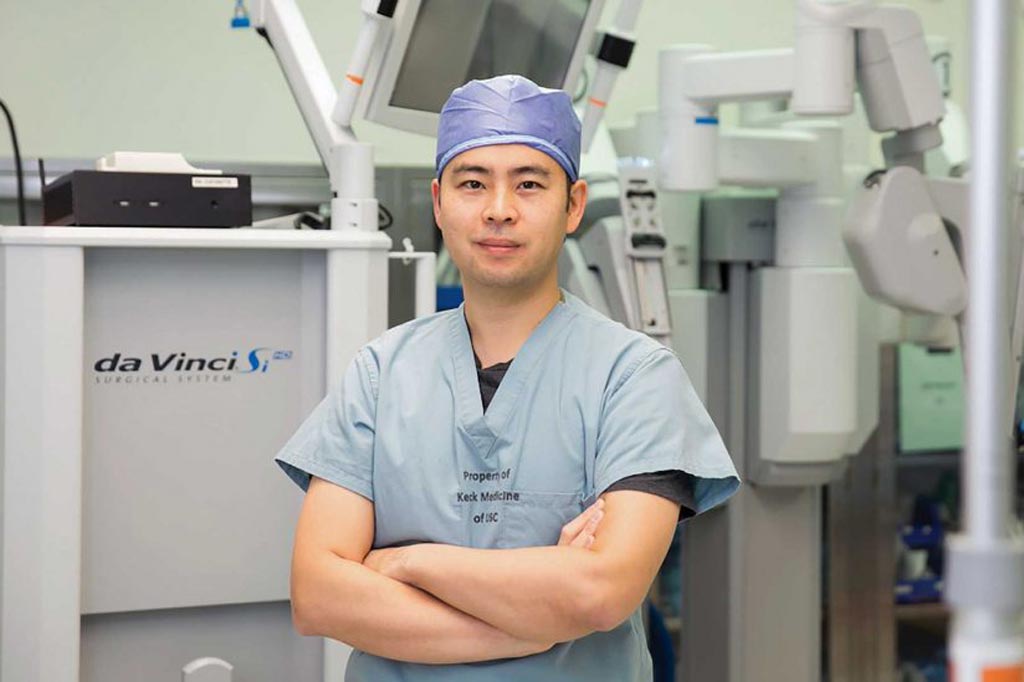Experience Enhances Robot-Assisted Surgical Skills
By HospiMedica International staff writers
Posted on 23 Jan 2018
A new study confirms that expert surgeons are more efficient and directed during preselected steps of robot-assisted radical prostatectomy.Posted on 23 Jan 2018
Researchers at the University of Southern California (USC; Los Angeles, USA) and Intuitive Surgical (Sunnyvale, CA, USA) conducted a study to explore and validate objective surgeon performance using a novel recording device called the dVLogger--which captures both anonymized video and movement data--to directly capture surgeon manipulations on the da Vinci Surgical System. Kinematic and events data were recorded for 10 expert and 10 novice surgeons while performing bladder mobilization, seminal vesicle dissection, anterior vesicourethral anastomosis, and right pelvic lymphadenectomy.

Image: Dr. Andrew Hung and the dVLogger, which tracks doctors’ movements during robotic surgery (Photo courtesy of Ricardo Carrasco III/ USC).
The performance of the 10 experts (mean 810 cases, range 100-2,000) and 10 novices (mean 35 cases, range 5-80) was evaluated in 100 robot-assisted radical prostatectomy cases. Experts rated all surgeons’ performance blindly using the Global Evaluative Assessment of Robotic Skills (GEARS) metric, and objective metrics were correlated to corresponding GEARS metrics using concurrent validation. Results showed that the experts completed operative steps faster, with less instrument travel distance, less aggregate instrument idle time, shorter camera path length, and more frequent camera movements.
In addition, expert surgeons had a greater ratio of dominant-to-nondominant instrument path distance for all steps, except for anterior vesicourethral anastomosis. For concurrent validation, the median experience of three expert reviewers was 300 cases, and intra-class correlation among reviewers was 0.6-0.7. However, the results showed that in anterior vesicourethral anastomosis and seminal vesicle dissection, kinematic metrics had low associations with GEARS metrics. The study was published in the January 2018 edition of The Journal of Urology.
“In order to be credentialed by institutions to use the robotic system, surgeons must be evaluated by their peers for a handful of procedures, but the evaluations are not ongoing, and sometimes evaluators don’t agree on what constitutes proficiency,” said lead author Andrew Hung, MD, assistant professor of clinical urology at USC. “Creating a sustainable, objective method for evaluating surgeon proficiency and standardizing credentialing is a way to help ensure patient safety. We now have an opportunity to put surgeon proficiency under the microscope and see what role it plays in patient outcomes.”
Related Links:
University of Southern California
Intuitive Surgical














